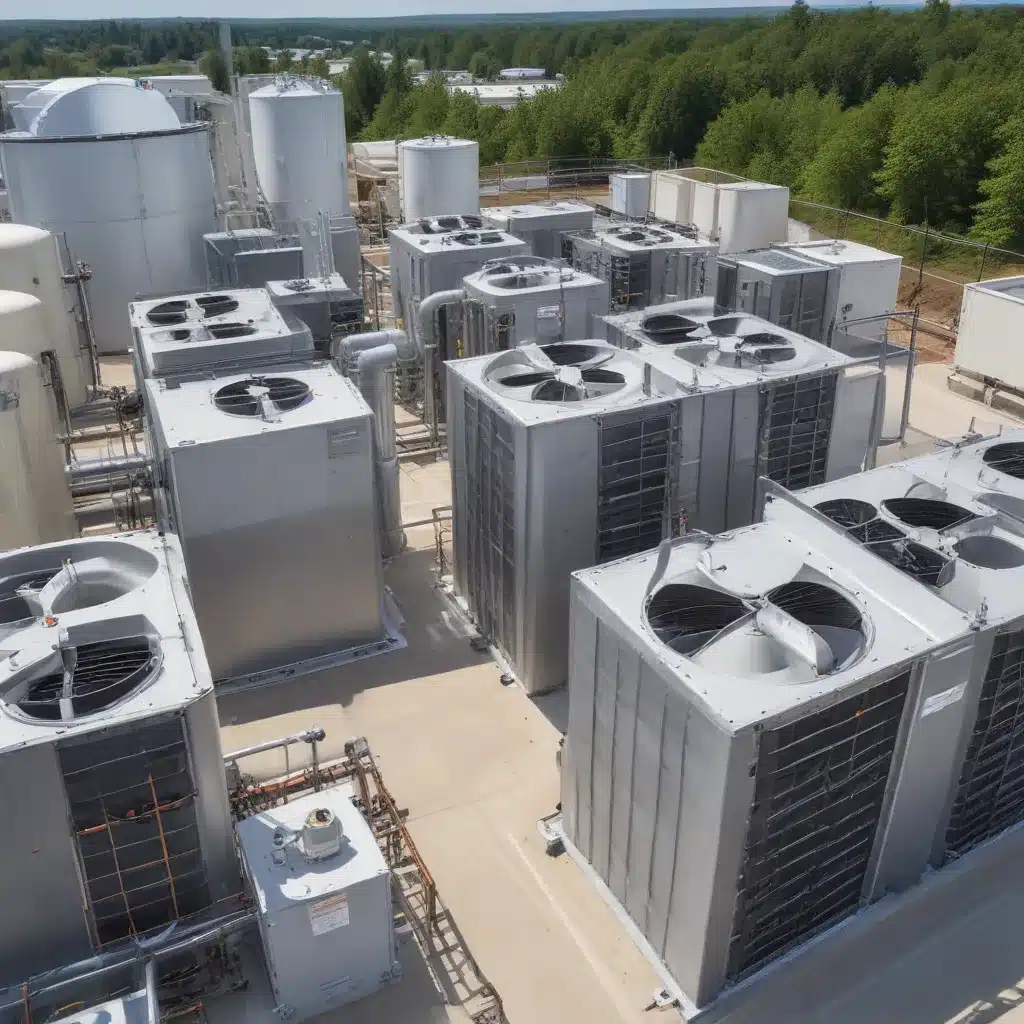
As an experienced air conditioning specialist, I’ve seen firsthand the transformative impact that thermal energy storage can have on HVAC applications. In today’s climate, where energy efficiency and sustainability are paramount, harnessing the power of thermal energy storage has emerged as a game-changer in the world of climate control solutions.
The Rise of Thermal Energy Storage
Thermal energy storage, or TES, is a technology that allows excess heat or cold to be captured and stored for later use. This innovative approach has the potential to revolutionize the way we heat and cool our homes and businesses, offering a host of benefits that traditional HVAC systems simply can’t match.
One of the key advantages of TES is its ability to decouple energy generation from energy consumption. By storing thermal energy during periods of high supply or low demand, TES systems can then release that energy when it’s most needed, effectively smoothing out the peaks and troughs in energy usage. This not only helps to reduce strain on the electrical grid but also translates to significant cost savings for homeowners and businesses.
Harnessing the Potential of Renewable Energy
But the benefits of TES extend far beyond just energy efficiency. By integrating TES with renewable energy sources, such as solar or wind power, we can harness the true potential of these clean energy technologies. Imagine a scenario where a building’s rooftop solar panels generate excess electricity during the day, which is then used to power a thermal energy storage system. When the sun sets and the building’s energy demand increases, the stored thermal energy can be tapped to power the HVAC system, providing cooling or heating as needed.
This synergistic approach not only reduces the building’s carbon footprint but also helps to mitigate the intermittency inherent in many renewable energy sources. By coupling TES with renewable energy, we can unlock a level of reliability and flexibility that simply isn’t possible with traditional HVAC systems.
Maximizing Efficiency Through Thermal Energy Storage
One of the most impressive aspects of TES is its ability to significantly improve the overall efficiency of HVAC systems. By storing thermal energy during off-peak hours or periods of low demand, TES systems can reduce the strain on the HVAC equipment, extending its lifespan and reducing maintenance costs.
Moreover, TES can be designed to take advantage of natural temperature fluctuations, such as cooler nighttime temperatures, to pre-cool or pre-heat a building. This allows the HVAC system to operate at a more optimal level, reducing energy consumption and lowering utility bills.
Adapting to Climate Change with TES
As the effects of climate change become more pronounced, the need for robust and adaptable HVAC solutions becomes increasingly critical. TES can play a pivotal role in helping buildings and communities cope with the challenges posed by extreme weather events and shifting climate patterns.
For example, in regions where heatwaves are becoming more frequent and intense, a well-designed TES system can help to mitigate the strain on the electrical grid during peak cooling periods. By storing thermal energy during the cooler hours of the day, the system can then release it to meet the building’s cooling needs, reducing the reliance on energy-intensive air conditioning units.
Conversely, in colder climates, TES can be utilized to capture and store excess heat generated during the day, providing a valuable resource for heating when temperatures plummet at night. This versatility makes TES a crucial tool in the fight against the growing challenges posed by climate change.
Overcoming the Hurdles of TES Implementation
Of course, the widespread adoption of thermal energy storage in HVAC systems is not without its challenges. One of the primary obstacles is the upfront cost associated with the installation and integration of TES technology. However, as the technology continues to mature and economies of scale are achieved, the long-term cost savings and environmental benefits of TES will increasingly outweigh the initial investment.
Another challenge lies in the complexity of integrating TES with existing HVAC infrastructure. Successful implementation requires a deep understanding of the building’s energy usage patterns, the local climate, and the specific needs of the occupants. This is where the expertise of experienced air conditioning specialists like myself comes into play, as we work closely with engineers, architects, and building owners to design and implement TES systems that are tailored to the unique requirements of each project.
Embracing the Future of HVAC with TES
As an air conditioning specialist, I’m excited to see the transformative potential of thermal energy storage in the HVAC industry. By harnessing the power of this innovative technology, we can not only improve the efficiency and sustainability of our climate control systems but also contribute to a more resilient and adaptable built environment.
Imagine a future where buildings seamlessly integrate renewable energy sources and TES, creating a self-sustaining ecosystem that minimizes energy waste and carbon emissions. This is the vision that drives my passion for this field, and it’s a future that I believe is well within our reach.
If you’re a homeowner or business owner looking to upgrade your HVAC system, I encourage you to consider the benefits of thermal energy storage. By partnering with an experienced air conditioning specialist like myself, you can unlock the full potential of this game-changing technology and take a significant step towards a more sustainable and energy-efficient future.
To learn more about how Hamilton Air Conditioning can help you harness the power of thermal energy storage, I invite you to visit our website at https://www.hamiltonaircon.co.uk/. Together, let’s explore the possibilities and shape the future of climate control solutions.